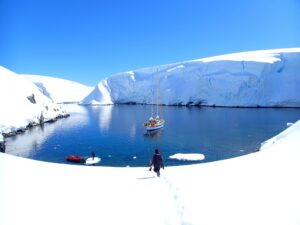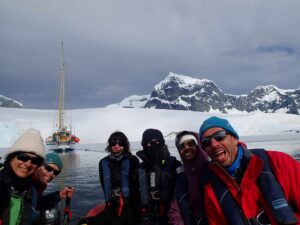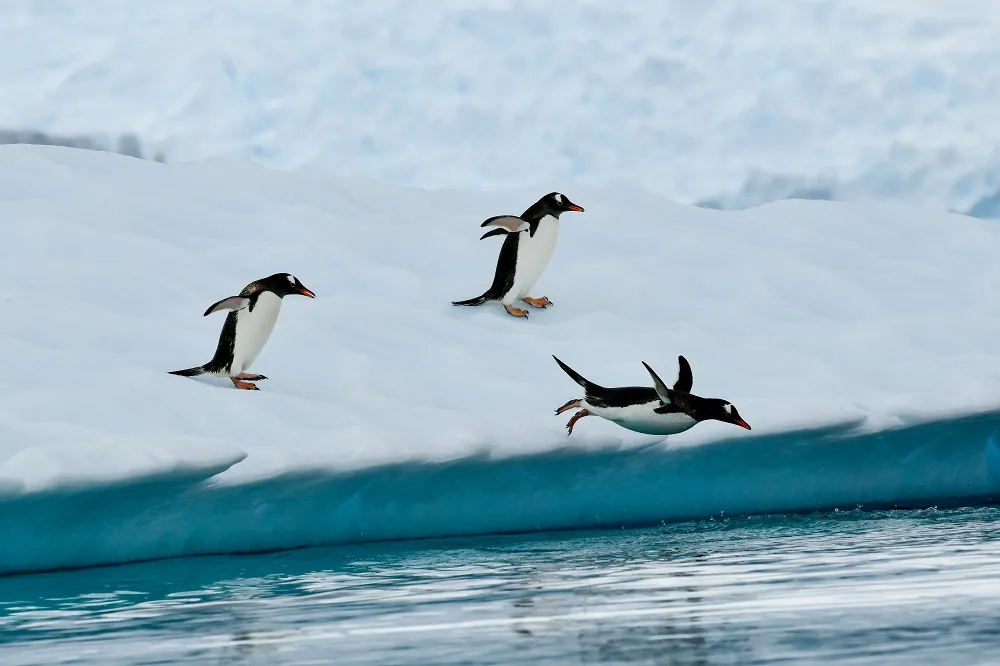A short whale research update 🙂
Briefly, the objective of this research is to investigate whether baleen whales are able to perceive the taste and smell (i.e. chemical cues) of their prey: tiny crustaceans called “krill”. Surprisingly, while whales have been studied for many years it is still unknown if they use their chemical senses! I thus brought with me 25 kg of krill extract that has a strong odor and taste in order to use it as a potential attractive cue for the whales in their foraging grounds. I also brought few kilos of clay that has a similar color as the krill extract, but that is odorless and tasteless. This will be used to run “control experiments”: just to be sure that the potential attraction was not simply due to the visual stimulus created by the orange-coloured krill extract. I have used the same protocol in different whales’ foraging and breeding grounds with interesting results, but doing this research in Antarctica is a unique opportunity: it is where the highest concentrations of krill can be found on earth, and where the Humpback whales migrate every summer to feed (they fast during the winter when they go to warmer waters to mate and give birth).
We started to encounter Humpack and Minke whales during the Drake Passage, but we had to reach more protected areas to run the behavioural experiments, with lower swell and wind.
During our passage between Deception Island and Trinity Island on December 24th, a group of 8 whales came very close to the boat. The weather was good, so we started our first trial using krill extract to create a “stimulus zone” in the open ocean, about 300m from the whales.
The whales moved around the boat and several groups joined together. They were at the same time actively feeding on krill, using a very special fishing technique: bubble nets: the whales dive under krill school and release air bubbles in circle or spirals. The krill is afraid by the bubbles and concentrate in the center of these circle. The whales then just have to swim towards the surface to eat them mouth widely open!
It is still hard to say if the animals stayed in the area because of the stimulus we created or only because the presence of krill in the areas, so we need to repeat this experiment several times with krill and also with clay. Statistic analyses of their trajectory and behaviour will then help to confirm whether there is a difference between control and krill tests. We also use a hydrophone (underwater microphone) to record the whales vocalizations during the trials, because they could potentially communicate between each other if they detect a food-related chemical cue. The hydrophone is attached to a floater equipped that is released in the middle of the stimulus zone.
We so far have run 6 more experiments (5 using krill and 2 using clay). We have encounter so many Humpack and Minke whales, they are everywhere!! This is a true paradise for whale researcher 🙂 The data from the hydrophone showed that the acoustic activity of the whales is very intense: we can sometimes even hear their growls resonating in the hull of the boat!! So far, even if we observed the whale swim in the krill patch, we have not seen a clear attraction towards the krill extract when compared to the clay. This is a bit different from what we have observed in other seas but of course, we need to perform more trials and statistical analyses to give any conclusion. A plausible explanation for the absence of reaction could be that there the antarctic waters host a very high concentration of krill: therefore there may be already a very strong smell and taste of krill naturally present in this ecosystem, and the quantity we use use during these trials (4 Kg) could be too low to be attractive to the whales. We will continue the trials, trying to release the stimulus closer to the animals, which may induce a behavioural response.
I can not do this research alone, and the Ocean Trump crew is just wonderful. Everyone is so motivated to help me and to get involved: Fede drives us quietly at the right spot near the whales, Adam helps and is in charge of releasing the fragile hydrophone floater, Laura and others record the whales trajectory and behaviours, Annie is the official bird watcher (birds may be attracted too and could influence the whales’ behaviours), Katherine releases the stimulus and mi hermano Miguel is the “drone airport” because he can very safely launch and retrieve it using his never-ending arms! I feel so lucky to be part of this crew and I could never have hoped for better research assistants. It is very inspiring to see what can come out from a team of people with such various backgrounds and who did not even know each other 2 weeks ago! Together, we’re able to do top quality innovative research, hoping the results will help better understand the behaviour of these gigantic freedivers who migrate thousands of miles to find their food here.
We also have been taking many photographs of the humpacks tails for scientific purposes. Each animal has a unique shape and coloration so these pictures can tell us how many animals live here and where they migrate (if the same animal is photographed later in another place). We will send these pictures to some of my colleagues who gather these data and will analyse them, providing crucial information on the species’ ecology.
I truly find a immense pleasure to live and work with everyone here, in a place that is so magically beautiful: we find ourselves working in surprisingly calm sea, surrounded with crazy icebergs and between islands with majestic snowy peaks. I want my office right here! And as Adam says, this would be my “perfect air-conditioned cubicle” 🙂
J’espère que vous allez tous bien et un bisous spécial à ma Pismie !!







